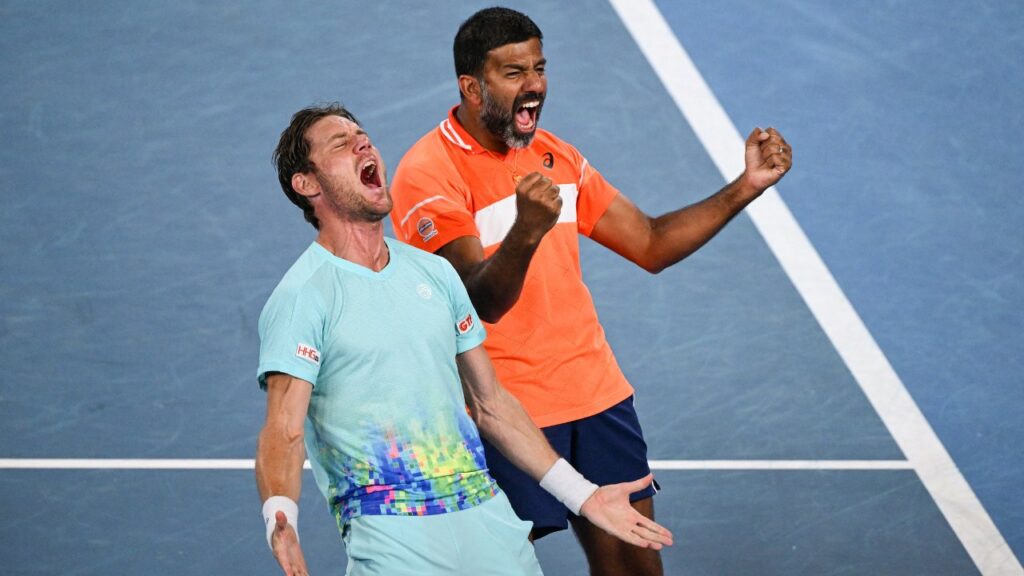
The year was 2010. And the month was February. By then, Google had already become the go-to search engine to keep abreast with everything that was happening in the world. As an ardent tennis fan, while scrolling through news items related to Singles, something else caught the attention of this writer: Rohan Bopanna and Aisam-ul-Haq Qureshi had just won the doubles tournament in South Africa, which turned out to be the duo’s maiden ATP title.
At that time, it seemed like a bit of irrelevant information. But the gentle giant from Bengaluru has been a picture of endurance and grit. On a rather cloudy night in Melbourne, 14 years after Bopanna won in South Africa, he clinched the Australian Open alongside his doubles partner Matthew Ebden, who incidentally was playing in front of his home crowd. He scaled the summit at the age of 43 years and 328 days. Yes, at the age of 43!
There are those who showcase dollops of skill at a young age. And then there are athletes who improve by small percentages and age like fine wine. Bopanna certainly belongs to the second tribe. In 2010, he finished second best to the legendary Bryan brothers doubles pair at the US Open. It took him seven more years to hoist his first Grand Slam trophy – Mixed Doubles – at the French Open. After a gap of another seven years, he has fulfilled the cherished dream of winning a Men’s Doubles Grand Slam.
So, how did the duo of Ebden and Bopanna go about clinically dismantling their opponents, Simone Bolelli and Andrea Vavassori? If Ebden came across like a surgeon at the net with his volleys and touch play, then Bopanna was the sculptor from the back of the court, cracking forehands and returns. The crosscourt forehand at 3-2 in the second set was arguably the shot of the game. On that occasion, by taking a step or two towards his left, Bopanna clearly wrong-footed his opponent, who had perhaps anticipated a forehand down the line.
When Ebden provided the finishing touches to the match with a forehand smash at the net, it was time for all the celebrations. Both players collapsed on the floor followed by a bit of chest-bumping. All the hard work in those practice arenas had manifested into fulfilling their dreams.
For Bopanna, in particular, the term survival of the fittest isn’t just another quote found on a website. But it has become his badge of honour over a period of time. A couple of decades ago, he had a spate of injuries. It included a career-threatening shoulder injury.
A year or two later, the door to find an escape route from frequent setbacks had opened up: Leander Paes withdrew from the Asian Hopman Cup, which allowed Bopanna to pair with Sania Mirza and clinch the title. Then, 2007 turned out to be a kind of breakthrough year as he and Quereshi had a successful time in the Challengers. Mirza and Bopanna also put on compelling performances in the Hopman Cup.
At the start of another decade, his moment in the sun finally arrived in South Africa. Although there have been enough obstacles and hurdles on the way, he hasn’t looked back since. And at 43, the supposedly bone-weary painter isn’t ready to hang up his spiked boots just yet. Perhaps the coveted Olympics medal will be his in a few months’ time.
EXCLUSIVE#RohanBopanna creates History!
Rohan Bopanna at 43 years and 329 days, becomes the oldest man to secure a Grand Slam in the Open Era. Additionally, he has achieved the remarkable feat of becoming the oldest player to reach the number one ranking in men’s doubles.… pic.twitter.com/YD0mTYSRAv
— RevSportz (@RevSportz) January 27, 2024




